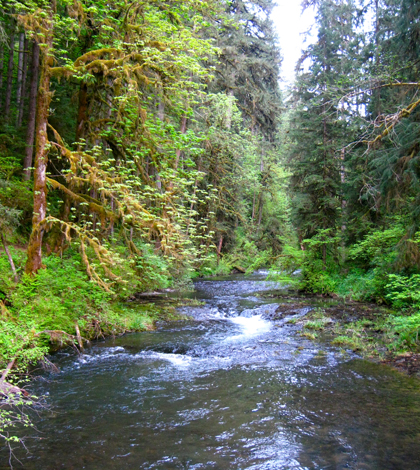Aging Japanese tree plantations leading to nitrogen pollution

A forested Oregon stream (Credit: Kristine/CC BY-ND 2.0)
Pollution is usually thought to be caused by automobiles, factories and other things made by humans. But in a recent press release from the American Society of Agronomy and the Crop Science Society of America, researchers explain there is another unexpected source of pollution: old-growth forests.
Cypress and cedar trees were planted over large areas in Japan in the 1950s and ‘60s due to the value and scarcity of the trees in Japan at the time. The mature forests from those plantings now have canopies that prevent sunlight from reaching the forest floor and encouraging new growth.
Pollution occurs because the old growth no longer uses as much nitrogen and nutrients as the younger growth trees and other plants. As a result, excessive amounts of nitrogen and other nutrients run off the forest floor during rains, polluting the water supply.
It is hoped that better management of the forest plantations, such as a recent forest thinning project, may result in a decrease in pollution. With branches trimmed away and more sunlight hitting the forest floor, more young growth may emerge. The young growth should use up more nitrogen and other nutrients, preventing pollution.
Featured Image: A forested Oregon stream (Credit: Kristine/CC BY-ND 2.0)





0 comments